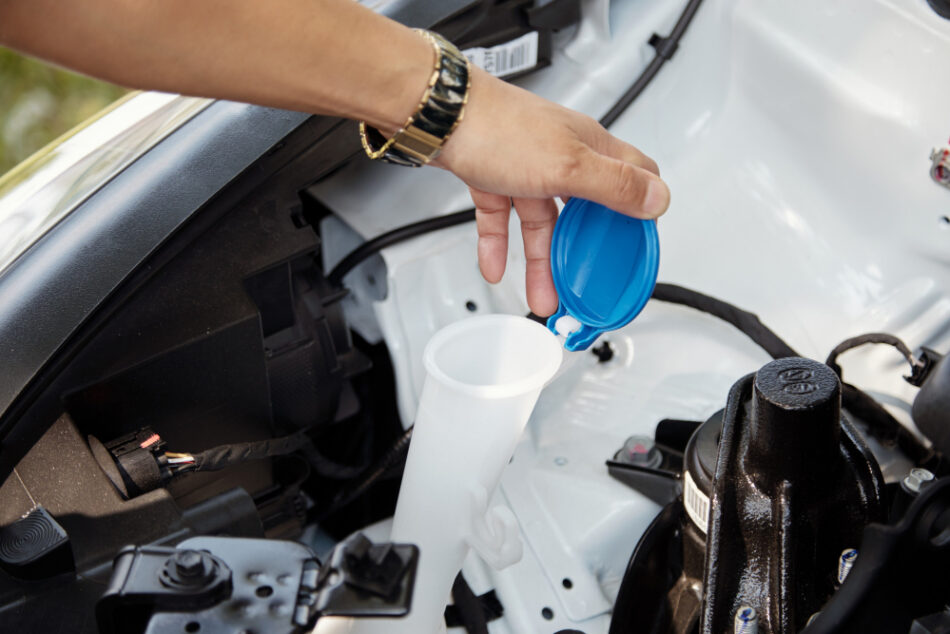Your car’s engine works hard every time you drive. It produces a lot of heat, and without the right cooling system, it can overheat quickly. Automotive coolant is the liquid that helps keep your engine at the right temperature, even in extreme heat or freezing cold. If you choose the right one, it can protect your engine and make it last longer.
What Is Coolant and Why Does Your Car Need It?
Coolant, also called antifreeze mix, is a liquid that flows through your car’s engine and radiator. Its main job is to remove extra heat from the engine and keep it running smoothly.
It also helps stop the engine from freezing in cold weather. On top of that, it protects engine parts from rust and corrosion. Without it, your car could overheat, get damaged, and cost you a lot in repairs.
Types of Coolant You Will Find
Not all coolants are the same. They are made with different chemicals and designed for different engines. Here are the main types you will come across:
- Inorganic Additive Technology (IAT)
This is the older type of coolant, often green in color. It works well for older cars and needs to be replaced more often—usually every 2 years or 40,000 km. It contains additives that coat the inside of the cooling system to protect against rust.
- Organic Acid Technology (OAT)
This type is often red, orange, or pink. It lasts longer than IAT, often up to 5 years or 240,000 km. Instead of coating all surfaces, it protects only the areas that need it. Many modern cars use this type.
- Hybrid Organic Acid Technology (HOAT)
This is a mix of IAT and OAT technology. It can be yellow, turquoise, or orange. It gives long-lasting protection while also working quickly to stop rust. Many European and Asian cars use HOAT coolants.
- Phosphate Organic Acid Technology (POAT)
Common in some Asian-made cars, this coolant offers good corrosion protection and works well in different climates. It often lasts up to 5 years.
Benefits of Using the Right Coolant
Choosing the correct coolant is more than just picking a color. The right type can give you several benefits:
- Prevents overheating by carrying heat away from the engine.
- Stops freezing so your car can start even in very cold weather.
- Protects engine parts from rust, corrosion, and mineral build-up.
- Improves performance by keeping engine temperature steady.
- Extends engine life by reducing wear and tear.
Signs Your Coolant Needs Changing
If your coolant is old or not working well, your engine can suffer. Watch for these signs:
- Temperature gauge often reads high.
- Coolant level drops quickly without visible leaks.
- The liquid looks dirty or rusty.
- Strange sweet smell from the engine area.
- Heater not working as well in winter.
If you notice these signs, it may be time to drain and refill your coolant.
How to Choose the Right Coolant for Your Car
With so many types available, choosing the right coolant might feel confusing. Here’s how you can make the right choice:
- Check your owner’s manual
Your car’s manufacturer will recommend the correct type. Follow it. - Look for compatibility
Not all coolants work with all engines. Using the wrong one can cause damage. - Know the mixing ratio
Some coolants come pre-mixed. Others are concentrated and need water added, usually in a 1:1 or 1:3 ratio. - Consider your climate
If you live in a very cold or very hot place, choose a coolant that offers protection for that range. - Check the service life
Long-life coolants cost more but last longer, so you change them less often.
Steps to Change Coolant Safely
If you want to change your coolant yourself, follow these basic steps:
- Let the engine cool completely.
- Place a drain pan under the radiator.
- Open the radiator drain valve and let the old coolant flow out.
- Close the valve and fill the system with fresh coolant.
- Run the engine for a few minutes to remove air pockets.
- Check the level again and top up if needed.
Always dispose of old coolant properly. It is harmful to pets, wildlife, and the environment.
Common Mistakes to Avoid
- Mixing different coolant types – This can reduce effectiveness and damage the engine.
- Using plain water only – Water alone can cause rust and freeze in cold weather.
- Overfilling the reservoir – Too much liquid can cause overflow when the engine heats up.
- Ignoring service intervals – Old coolant loses its protective properties over time.
Tips to Keep Your Cooling System in Good Shape
- Check coolant levels every month.
- Inspect hoses and radiator for leaks.
- Keep the radiator cap clean and tight.
- Use distilled water when mixing concentrate to prevent mineral build-up.
- Flush the system when changing to a different coolant type.
Keep Your Car’s Engine Safe in Every Season
Keeping your car’s engine cool is not just about comfort—it’s about avoiding expensive repairs. Using the right automotive coolant will protect your engine in all seasons, prevent rust, and help it last longer. If you are not sure which one to choose, check your owner’s manual or ask a trusted mechanic.
For dependable performance, you might want to consider a high-quality option like Velvex SuperKool, which is made to protect in both extreme heat and cold.







